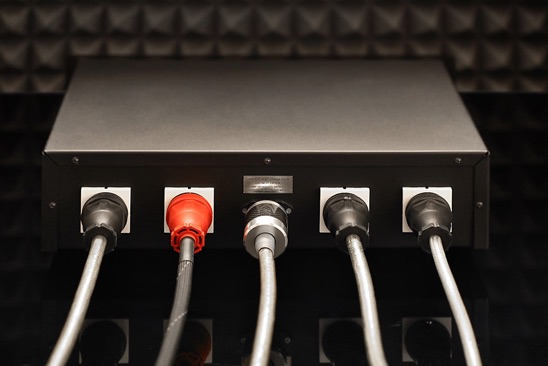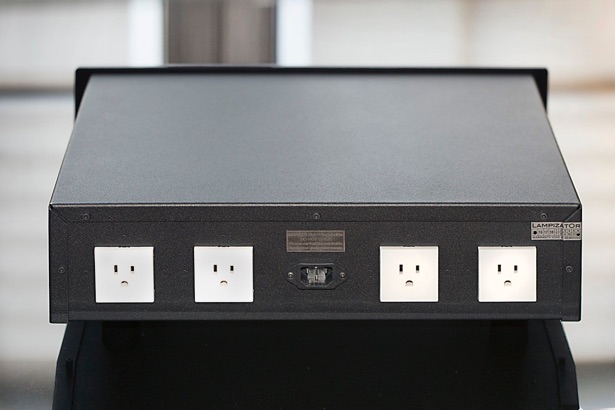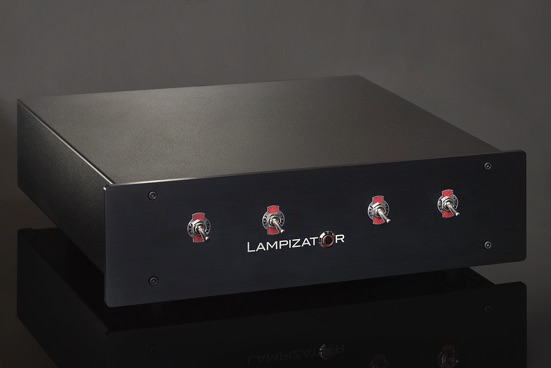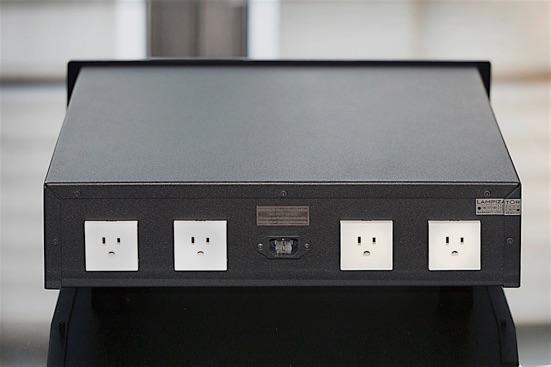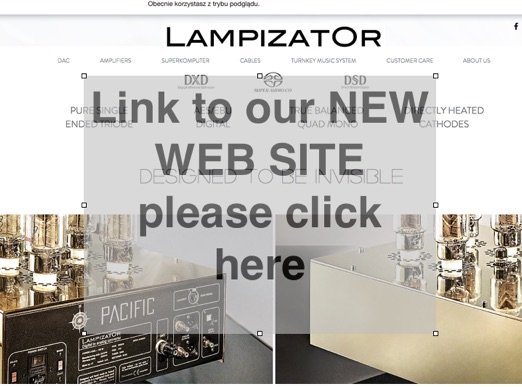DE
“THE SILK” - MAINS 110/220/240 AC filter and split box
The continuation of SILK filter that made Lukasz famous 15 years ago on Audio Asylum
The SILK was conceived as an “extension” of Lukasz Fikus Polytechnic studies diploma, where the AC and RFI/EMI influence on electronics was the subject. The SILK also was the fruit of frustration with the way other AC devices influence the sound. Namely, we believe that separation transformer based conditioners, AC regenerator conditioners, and deep filter conditioners make sound lifeless and uninvolving. We tried to design a filter that makes music actually MORE BEAUTIFUL:
What is MOST IMPORTANT is not to spoil the dynamics, live type of sound. The principle of SILK is to remove the radio frequency interference - in GIGA and MEGA hertz, while not affecting the 50/60 Hz AC fundamental.
All known hi-fi devices react with improved clarity and holographic realism, while the dynamics both macro and micro is raw and unspoiled.
Four individual receptacles (outlets) are separated by own filters so interference does not cross from one component to another.
HAving 4 outlets serves as AC SPLITTER BOX which organizes everything neatly in the rack. Shall you need more - simply order two SILKs.
Technically the SILK filter is “just” a CLC PI type filter with lowpass function around 100 kHz.
The caps are superfast hi-voltage ceramics 5,6 nF / 1600 VAC and the ferrite ring cores are of very high core density.
I use thick wires - 2,5 mm pure solid core copper (Polish copper, not contaminated like the Far Far Away made copper from recycled scrap. )
We also offer pure silver version with 99,97 wiring solid silver core and with Duelund pure silver caps (6 of them) for the ULTIMATE GUCCI SILK.
The AC outlets on the pictures above are SHUKO type .
Read below about the SCHUKO standard from Wikipedia:
History:
The Schuko system originated in Germany and goes back to a patent (DE 370538) granted in 1926 to Albert Büttner, a Bavarian manufacturer of electrical accessories. It is used today in more than 40 countries, including most of Continental Europe.
France, Belgium, the Czech Republic, Slovakia and Poland use a type of plug and socket (CEE 7/5) with the same size and spacing of the main pins but with a male protective-earth pin on the socket instead of the earth clips and without the guiding notches at the sides. Most modern moulded-on Schuko plugs, and good-quality rewirable replacements, are a hybrid version with an extra hole ("CEE 7/7") that also accommodates the earth pin of French sockets.
CEE 7/7 has now become the de facto standard across Europe and in many other countries that follow CENELEC standards. European countries that do not use CEE 7/7 are:
-
•Denmark (CEE 7/17 and and Dainish standard 107-2-D1 are widely used, they accept CEE 7/7 plugs but without compatibility for earth connections. CEE 7/5 and CEE 7/4 sockets with child-proof shutters has been allowed since 2008/2011, but people are not using them yet).
-
•Ireland (BS1363 / Equivalent Irish Standard: IS 401) but see below,
-
•Italy (CEI 23-16/VII),
-
•Malta (BS1363),
-
•Cyprus (BS1363),
-
•The United Kingdom, including Gibraltar (BS 1363)
-
•Switzerland
In Italy, CEI 23-16/VII is the dominant standard, though Schuko is also an approved standard and is in common use. Appliances are sold with either Italian or Schuko-type plugs. A minority of sockets accept both types, the remainder accepting one or the other. Schuko sockets are most commonly used for larger-rated appliances such as washing machines, and are particularly common in South Tyrol, with its cultural, economic and tourist connections with Austria.
Although Schuko has never been a standard (or the de facto norm) in Belgium or France, it is sometimes encountered in older installations in eastern regions of Belgium and Alsace. Newer installations adhere to national standards.
In parts of the Republic of Ireland, Schuko was commonly installed until the 1960s. For safety reasons and to harmonize with the UK (with which Ireland has a long-standing free travel arrangement) and avoid having a different outlet type in Northern Ireland and the Republic of Ireland, the Republic standardized on BS1363 (transposed into Irish Standards as IS401 (Plug) and IS411 (Socket outlet). Schuko has been phased out of use in Ireland and will be encountered very rarely. Some hotels provide a Schuko outlet alongside BS1363 outlets for the convenience of visitors from the Continent.
Russia, while maintaining its own mains connector standard, has it largely harmonized with the relevant European regulations since Soviet times. The original Soviet standard was mostly compatible with europlug (traditional Soviet plug used straight 4 mm pins with 19 mm spacing and thus Soviet sockets were able to easily accept europlugs), and since Schuko introduction was modified to include its specifications, due to the large volume of imported appliances equipped with the Schuko plug. This was necessitated by the fact that 4 mm holes in the Soviet sockets could not accept 4.8 mm Schuko pins without modification. Nowadays most sold and installed sockets in Russia are Schuko ones, though they may lack grounding wire connection, especially in older buildings, as this wasn't required by the Soviet wiring regulations.
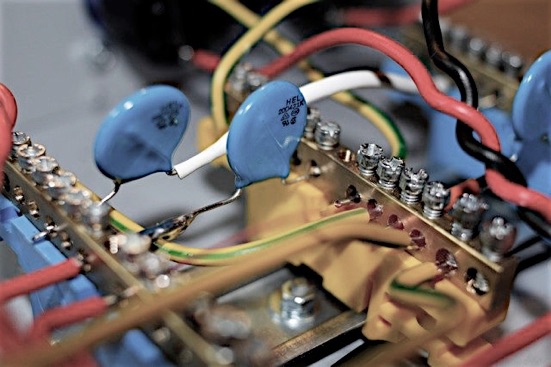
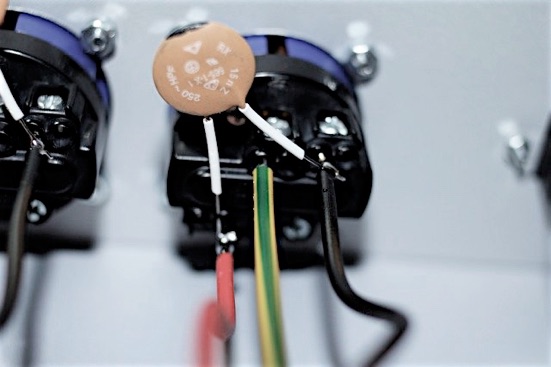
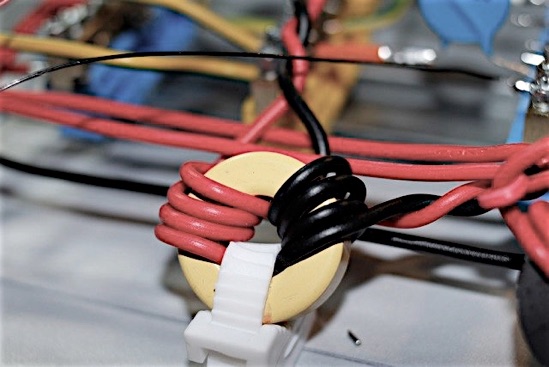
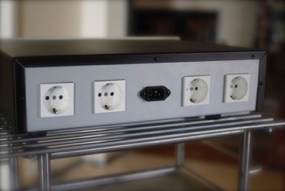
Above: UK, USA and Schuko - the new Legrand (French) high quality receptacles in SILK Generation 2 from June 10 / 2013


